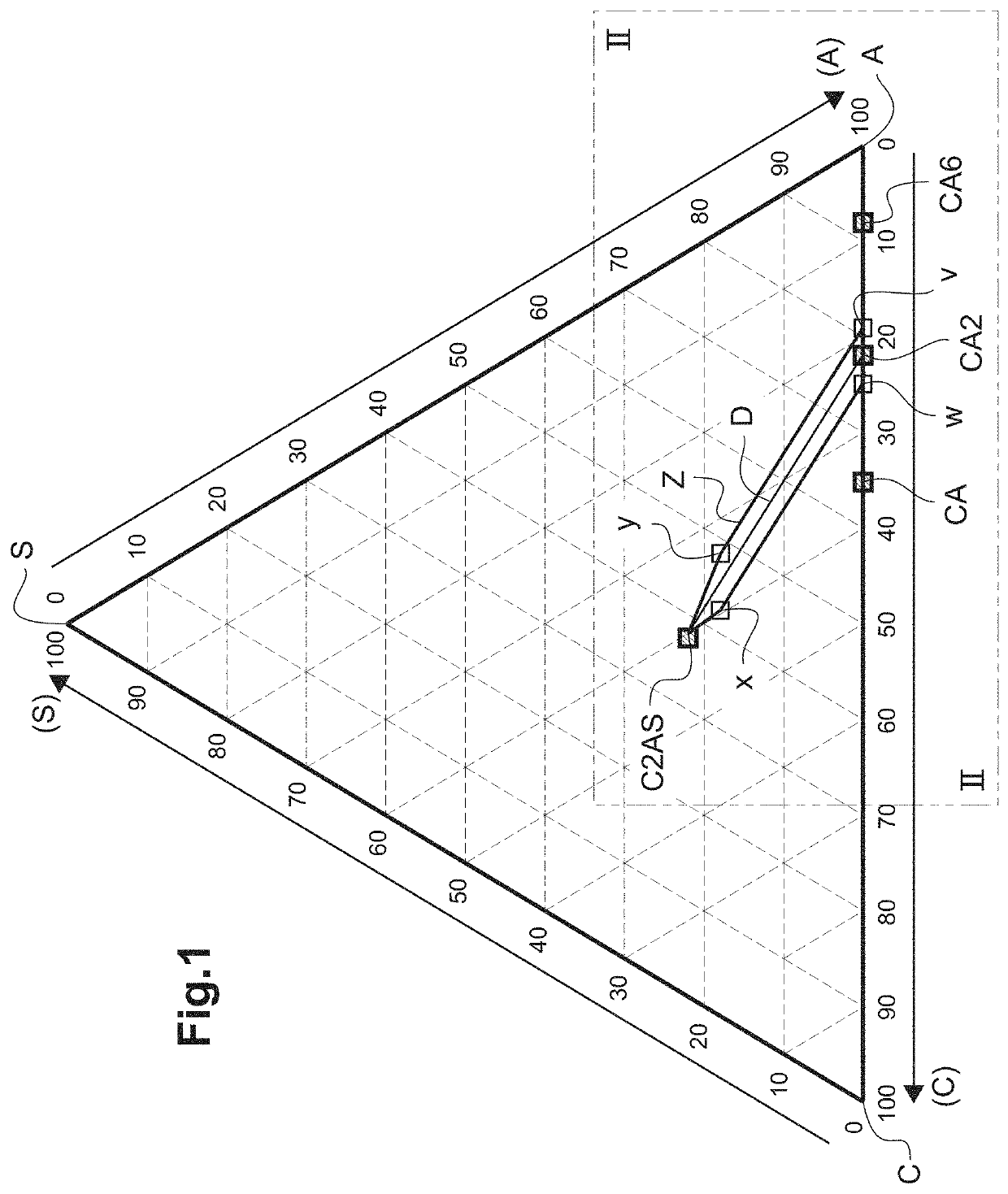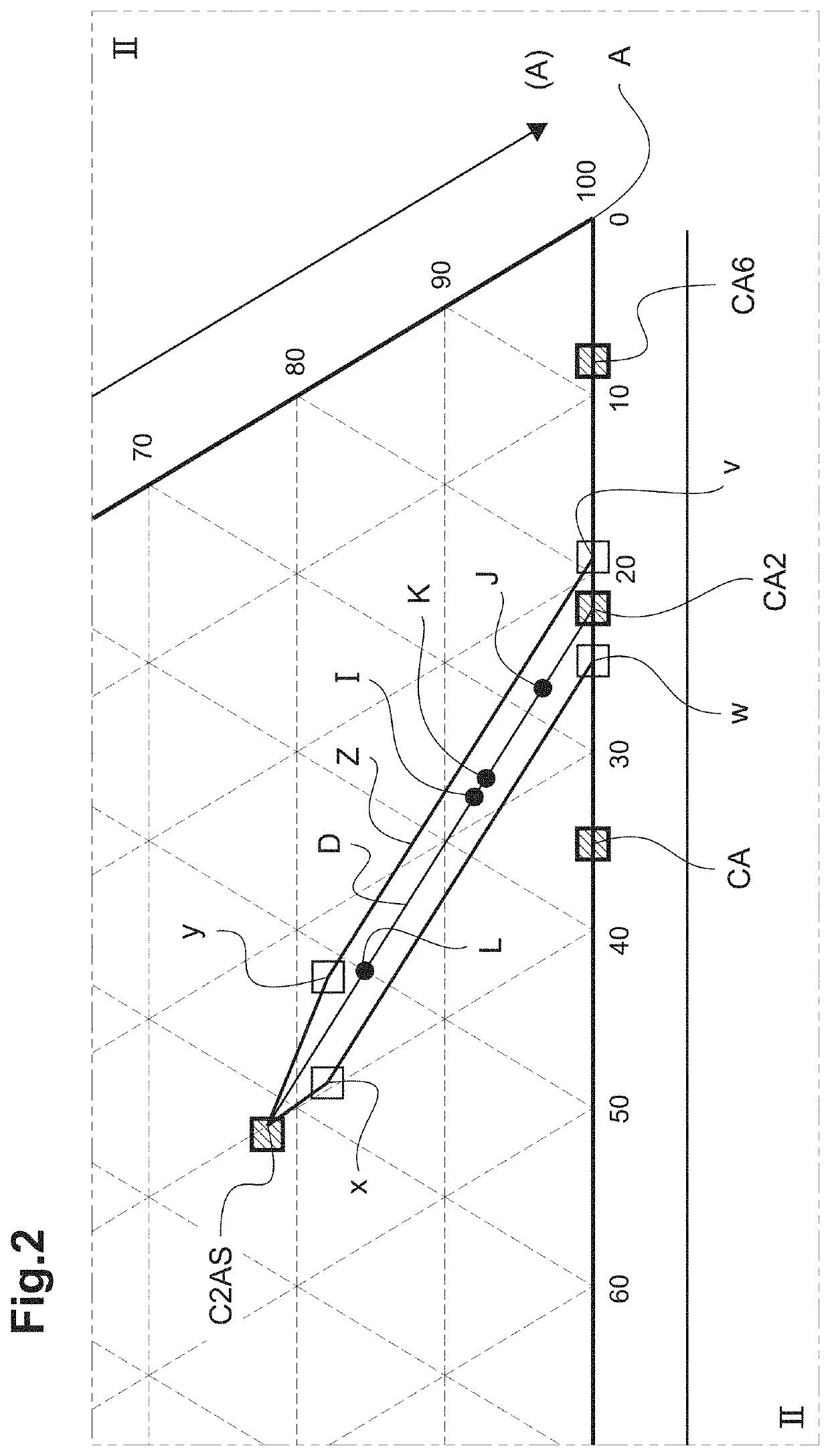Long-workability calcium aluminate cement with hardening promoted by a temperature increase, and related use
a technology of calcium aluminate cement and temperature increase, applied in the field of cement, can solve the problems of reducing the workability lowering the mechanical resistance of the hardened final material, and becoming difficult to predict the hardening kinetics of the cementitious composition, etc., to achieve the effect of improving the mechanical resistance and chemical resistan
- Summary
- Abstract
- Description
- Claims
- Application Information
AI Technical Summary
Benefits of technology
Problems solved by technology
Method used
Image
Examples
examples
[0252]In the part that follows, examples have been implemented in order to assess the properties of the calcium aluminate cement according to the invention, and to compare them with those of other existing cements.
[0253]To do so, various cementitious compositions have been formed from various calcium aluminate cements, of which the cement according to the invention, and these cementitious compositions have been characterised using several tests.
[0254]Two main aspects make it possible to characterise a cementitious composition: its workability which translates the open time during which the cementitious composition has a viscosity adapted to its use, and its hardening kinetics.
[0255]The hardening kinetics reflect the speed of thickening of the cementitious composition and the instant from which the hydraulic setting is initiated, as well as the mechanical resistance reached by the hardened final material obtained from the cementitious composition after the latter has reacted with the...
PUM
| Property | Measurement | Unit |
|---|---|---|
| mass fraction | aaaaa | aaaaa |
| mass fraction | aaaaa | aaaaa |
| temperature | aaaaa | aaaaa |
Abstract
Description
Claims
Application Information
 Login to View More
Login to View More - R&D
- Intellectual Property
- Life Sciences
- Materials
- Tech Scout
- Unparalleled Data Quality
- Higher Quality Content
- 60% Fewer Hallucinations
Browse by: Latest US Patents, China's latest patents, Technical Efficacy Thesaurus, Application Domain, Technology Topic, Popular Technical Reports.
© 2025 PatSnap. All rights reserved.Legal|Privacy policy|Modern Slavery Act Transparency Statement|Sitemap|About US| Contact US: help@patsnap.com


